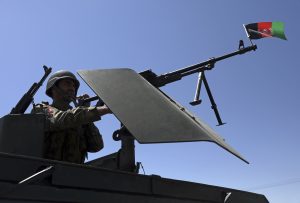On February 8, 1988, then-President Mikhail Gorbachev announced that the Soviet Union would withdraw its military forces from Afghanistan. That withdrawal began on May 15 and was completed on February 15, 1989. In its wake, the Soviet Union left a government under the leadership of Dr. Mohammad Najibullah Ahmadzai. At the time, as scholar Thomas Barfield wrote, “It was universally believed that once the Soviets left, the mujahedin would overrun government outposts, take the regional cities, and march on Kabul in triumph in a matter of months, if not weeks.” And yet, President Najibullah held his government together for three years after the Soviet withdrawal, its collapse finally occurring in April 1992, after the dissolution of the Soviet Union and cessation of Soviet aid in December 1991.
On April 14, President Joe Biden announced that the United States would withdraw its military forces from Afghanistan. That withdrawal began on May 1 and is to be completed no later than September 11. In its wake, the United States will leave a government under the leadership of Dr. Ashraf Ghani. At the time of Biden’s announcement, there were a flurry of predictions that the Taliban would move quickly to overrun government outposts, seize regional cities, and ignite a broader civil war or march on Kabul to topple the government. But will these predictions turn out to be accurate? Or will they, like those of Najibullah’s quick demise, prove to be overly dire and based on faulty assumptions? What should we expect to happen after the U.S. withdraws from Afghanistan?
Answering those questions requires examining the Soviet withdrawal in more detail, and comparing the situation that existed in 1989 to the situation today. As we will see, there are both striking similarities and distinct differences between the two, which should inform our thinking about the future of Afghanistan.
Writing as a RAND analyst in 1991, Zalmay Khalilzad – today the United States’ special representative for Afghanistan reconciliation – identified three assumptions that underpinned predictions of Najibullah’s hasty overthrow: his regime was brittle and likely to fragment once the Soviets left; the departure of Soviet advisers would decisively shift the military balance to favor the mujahideen; and the Soviets cared only about securing a “decent interval” between their departure and the government’s collapse, and would therefore only provide limited assistance to Najibullah for a short time. These assumptions, of course, were incorrect. But it’s instructive to observe just how incorrect they were.

































